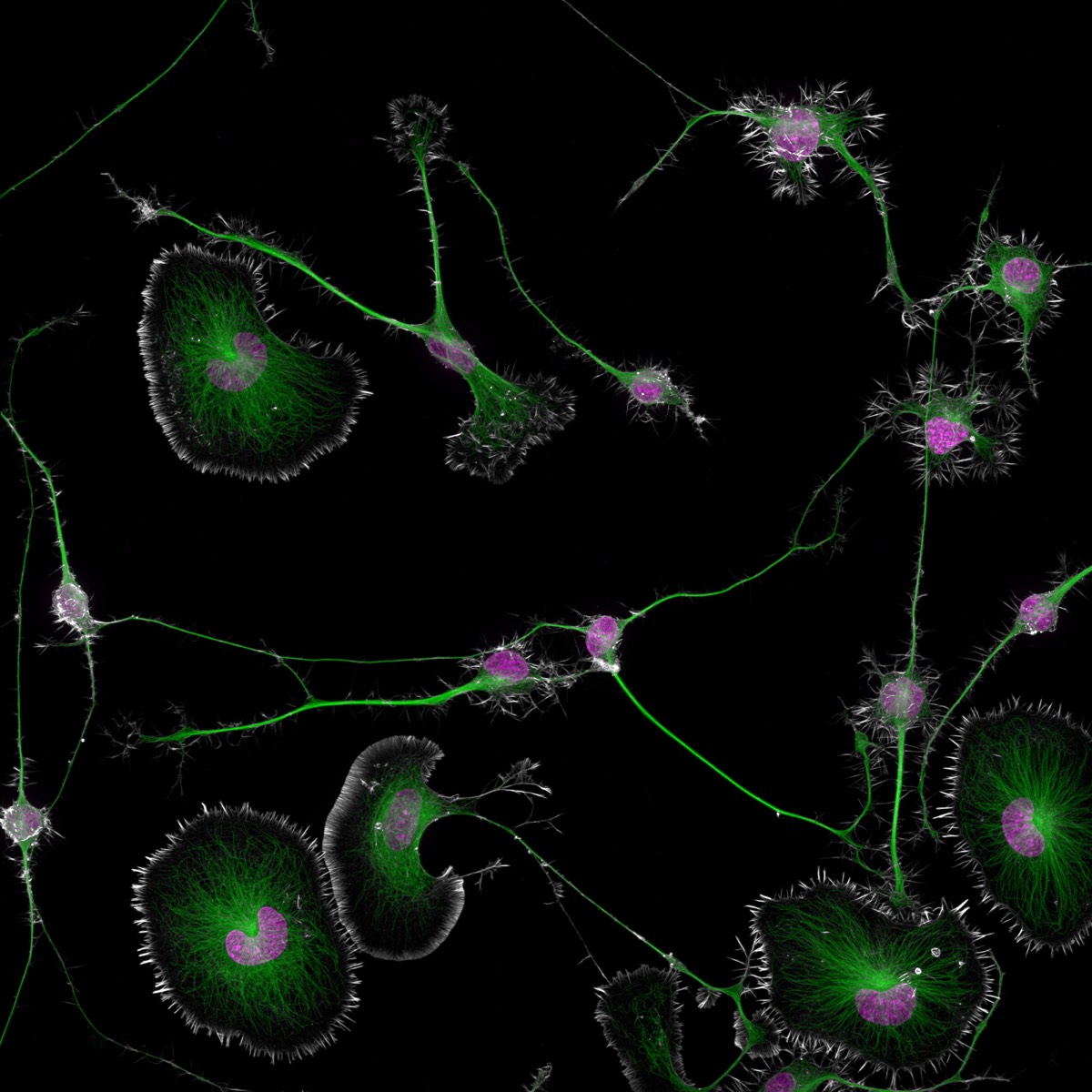A stunning image of differentiated mouse brain tumor cells has won the 2024 Nikon Small World photomicrography contest, yielding valuable insight into how degenerate diseases like Alzheimer's and ALS can arise from disruption in the cytoskeleton of brain cells. The image was taken by Bruno Cisterna, with assistance from Eric Vitriol, both with Augusta University in Georgia.
"One of the main problems with neurodegenerative diseases is that we don't fully understand what causes them,” Cisterna said in a statement. “To develop effective treatments, we need to figure out the basics first. Our research is crucial for uncovering this knowledge and ultimately finding a cure. Differentiated cells could be used to study how mutations or toxic proteins that cause Alzheimer's or ALS alter neuronal morphology, as well as to screen potential drugs or gene therapies aimed at protecting neurons or restoring their function.”
It's the 50th anniversary of Nikon's annual contest, which was founded back in 1974 "to showcase the beauty and complexity of things seen through the light microscope." Photomicrography involves attaching a camera to a microscope (either an optical microscope or an electron microscope) so that the user can take photographs of objects at very high resolutions. British physiologist Richard Hill Norris was one of the first to use it for his studies of blood cells in 1850, and the method has increasingly been highlighted as art since the 1970s. There have been many groundbreaking technological advances in the ensuing decades, particularly with the advent of digital imaging methods.
This year's winning entry arose from Cisterna's research into a protein crucial for building brain cell structure (profilin 1, or PFN1); that structure is essential for functional cellular transport. He found that when the protein and related processes are disrupted, the microtubule highways can malfunction and cause damage to the cells. Capturing the actin, microtubules, and nuclei with photomicroscopy was a painstaking process that took about three months just to perfect the staining process. Cisterna and Vitriol paid particular attention to getting just the right field of view and got the image they were waiting for after three hours of observation.
“At 50 years, Nikon Small World is more than just an imaging competition—it’s become a gallery that pays tribute to the extraordinary individuals who make it possible," said Nikon Instruments rep Eric Flem. "They are the driving force behind this event, masterfully blending science and art to reveal the wonders of the microscopic world and what we can learn from it to the public. Sometimes, we overlook the tiny details of the world around us. Nikon Small World serves as a reminder to pause, appreciate the power and beauty of the little things, and to cultivate a deeper curiosity to explore and question.”
Here are the remaining top 20 winners of this year's contest, ranging from close-up views of octopus eggs, green crab spider eyes, and slime molds to capturing the electric arc between a pin and wire, and an insect egg that has been parasitized by a wasp. You can check out the full list of winners, as well as several honorable mentions, here.


